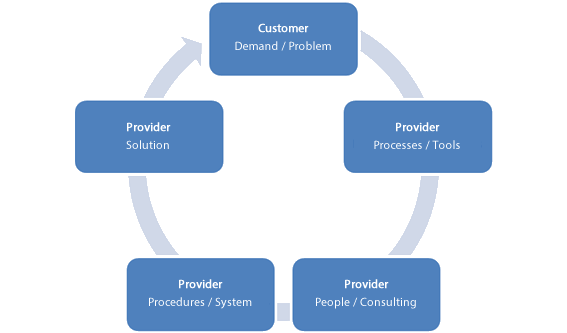Support: understanding the problem and the solution

Technological advancement has come to stay. With it, a change in behavior came to establish a new height in the routines of individuals and companies. Who seeks not be up-to-date with technology? Are tablets, smartphones, better mobility and connectivity.
Companies are also constantly seeking innovation to improve performance and corporate results. Not to mention the legal obligations because the public agencies would not be out of this “wave”. This is the challenge of the corporate world: how to keep up to date with the best technology solutions to improve operational efficiency and meet the legal landscape, and on top of all this supporting context?
The concept of the problem is that, as organizations invest in solutions that seek efficiency, or even tools that are needed to meet the mandatory requirements set out by the Government, the problem becomes self-sufficient. The problem arises with the need to adhere to the business solution.
Implement a system ensuring that it adheres to the business is the second part of the problem. And, once in production, support the solution is the third part of the same problem. The latter continuously. Thus, making the perception of apparent wear.
This concept defines the reality experienced by enterprises, which are considered “hostages” of support and support to ensure that businesses remain operational. Therefore somewhat explains the false feelings of low value-added and unwanted fixed cost.
However, the support service can contribute significantly to the company that hires him. See the cycle of value that involves this type of service, represented by the figure below:

The customer has already experienced problems in their initial two instances: the need to purchase and implement a solution. Now, represented by the flow, the client directs a demand for the contracted support structure. This demand is always a routine problem and may be a systemic problem or some difficulty of use of the solution. Anyway, always laden with expectation for rapid resolution and lowest possible cost.
When the support provider learns of the application, the service structure starts to work towards resolution. And then begins the process of collaboration that is inherent in the support service.
In the first step, the supplier uses their tools of customer relationship and leads to demand within its structure to meet the same. In this step, the customer does not perceive any value in the service.
In the second and third stages, professionals use their knowledge in pursuit of the resolution, making use of the procedures and systems that will build the solution being presented. At this stage, the customer still does not realize the value that the service is adding to the business.
Finally, in the last step, the solution is delivered to the client, ending the value of the duty cycle. In this last stage of solution delivery, the customer may perceive more clearly the value of the service to the extent that a consistent solution meets business expectations. Therefore, it is worth mentioning that the customer perceives the value of support services through the solution to it is presented to each respondent problem.
However, the supplier is important to be clear that the solution is a composite of all previous steps. Different from the concept of the problem, the solution is not self-sufficient.
The consolidation of clear and agile processes, and the use of appropriate control tools allow the customer demand is conducted smoothly within the support structure. The transfer of knowledge provided by skilled and well trained professionals will be fundamental to understanding the problem and propose a solution, contributing indirectly to learning client. Standardized procedures and tools that enable good management of knowledge base are also factors that enable the delivery of an objective solution.
Anyway, the customer always realize the value of service delivery through the solution for every problem. This means that the value is not the people or the knowledge? No! It just means that people, knowledge and all other aspects that contribute to the construction of the solution have their delivery of individual worth, how the total amount of the final solution that is perceived.
In this case, the ability to understand the problem directs the construction of solution. And every time the end user perceive value in delivering the right solution will be one step closer to transforming the relationship “problem solution X”.
Full article: http://www.baguete.com.br/








